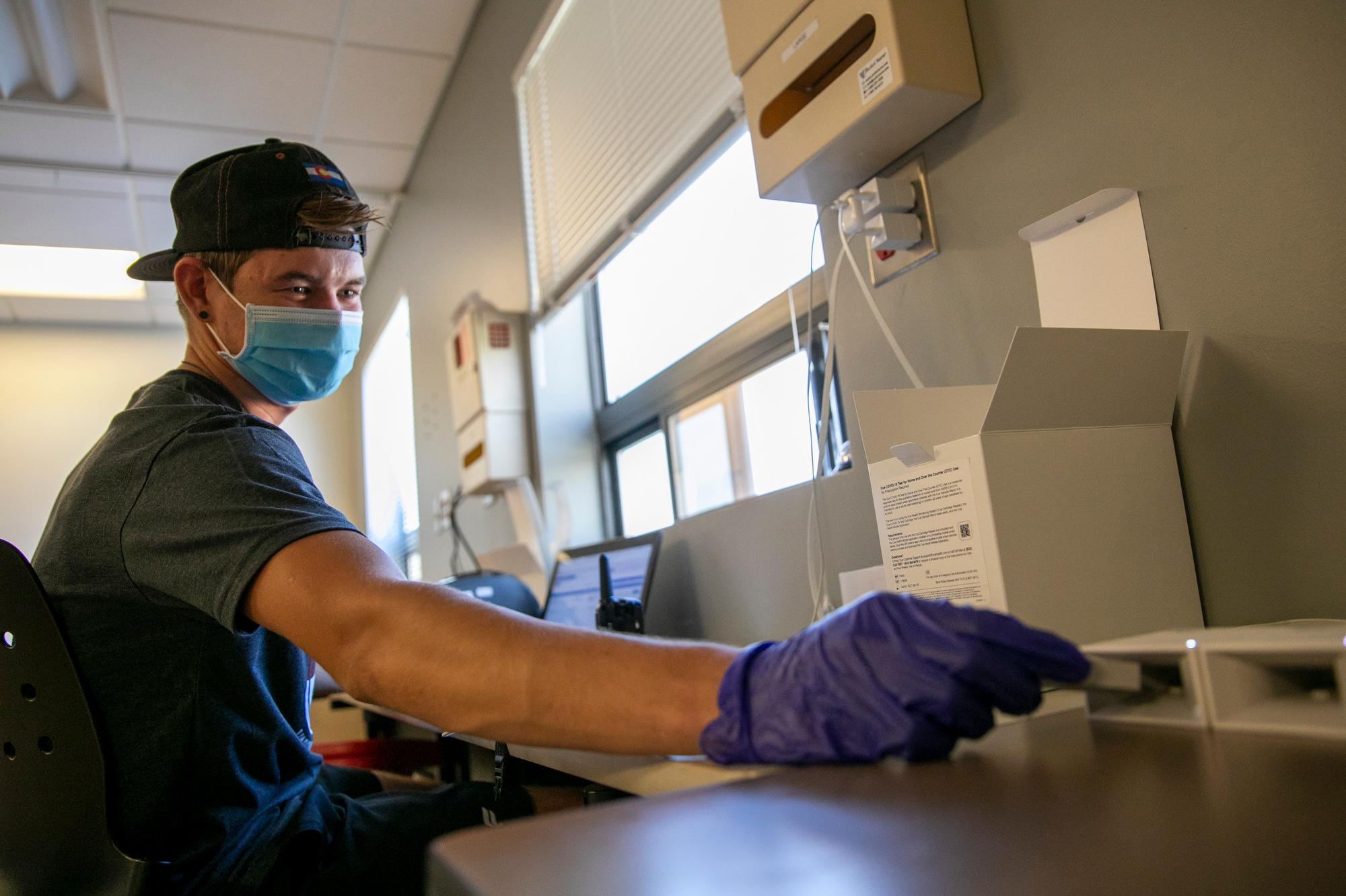
Statewide COVID-19 hospitalizations, cases and transmission remain near record-high levels.
On its dashboard Monday, Colorado’s health department reported 1,655 patients are hospitalized with confirmed cases. That's still within 200 of the all-time peak, but the number has hovered around that point for several days.
The true state of things is a bit hard to tell, since data often comes in slower over a holiday weekend and only 54 percent of hospitals updated their data in the last day.
The highly contagious omicron variant of COVID-19 has shown a clear pattern in many places around the globe. Rapid, huge levels of transmission, followed by record case numbers and then in a few weeks increased hospitalizations and deaths.
But after a stark rise on the epidemiological graphs, the numbers of infections also typically head down, often quickly. And that’s what state health officials and many in the state’s health system will be looking for in the coming days.
In Colorado on Christmas Day, the state reported 992 confirmed COVID-19 hospitalizations. It then added more than 600 coronavirus hospitalizations during the next three weeks. But for the last four days, that figure has hovered around 1,660.
Hospital staffing is as tight as it's ever been
The high number of patients is hitting just as hospital staffing of frontline providers is as tight as it has been for the entire pandemic.
Half of the state’s hospitals anticipate a staffing shortage in the next week. Colleen Casper, executive director of the Colorado Nurses Association, said nurses are beyond stretched thin.
“They're worn out and their capacity to deliver care is compromised on every level,” she said. “It's more than a burnout, right? It's a fatigue, it's that moral distress. And it's a chronic trauma not being able to deliver what you know is the right thing to do.”
The state now has 121 ICU beds available, which is about 500-600 fewer than it had at the start of the pandemic. Almost a third of Colorado hospitals said Monday they anticipate an ICU bed shortage in the next week.
COVID-19 cases rose rapidly after Christmas
Colorado’s case numbers also saw a steep rise after the Christmas holiday week.
On Christmas Eve, the state reported nearly 6,000 new cases. A week later, on New Year’s Eve, that figure had doubled to nearly 12,000; six days later, the number was more than 19,000 cases reported in a single day.
For context, the highest one-day number the state had recorded before that was about 7,000 in mid-November of 2020.
On Jan. 10, state data showed Colorado had surpassed more than a million cases since the start of the pandemic. Since then, it’s added new cases at a previously mind-boggling clip — nearly 134,000 new cases in a week.
And these numbers are surely an undercount. Often, the number of cases reported lags for a couple of weeks and the state’s numbers don’t include the vast majority of positive cases from rapid tests conducted at home, which most people don’t report to the state.
The omicron wave could be cresting, but it's too soon to tell
The state’s rate of positive tests may be showing early signs of easing, but it’s probably still too soon to tell.
Last week, on Jan. 11, the state’s positivity rate was threatening the 30 percent threshold at an all-time high of 29.43 percent. That’s six times the level health experts consider worrisome. And it was quintuple the level Coloradans saw just a month earlier.
But since then it’s dropped every day and on Monday it was at 27.47, a drop of nearly 2 percent in less than a week.
The overall huge COVID-19 numbers mean Colorado, and other parts of the country, can expect to see major impacts across society until the number of cases decline a lot more.
“There's huge absenteeism across all sectors,” said Samuel Scarpino, a complex systems scientist and the Managing Director of Pathogen Surveillance at The Rockefeller Foundation. “And so there's gonna be big disruptions just to day-to-day life, but then also, the supply chains, the downstream economic consequences, all of those things will dovetail.”









